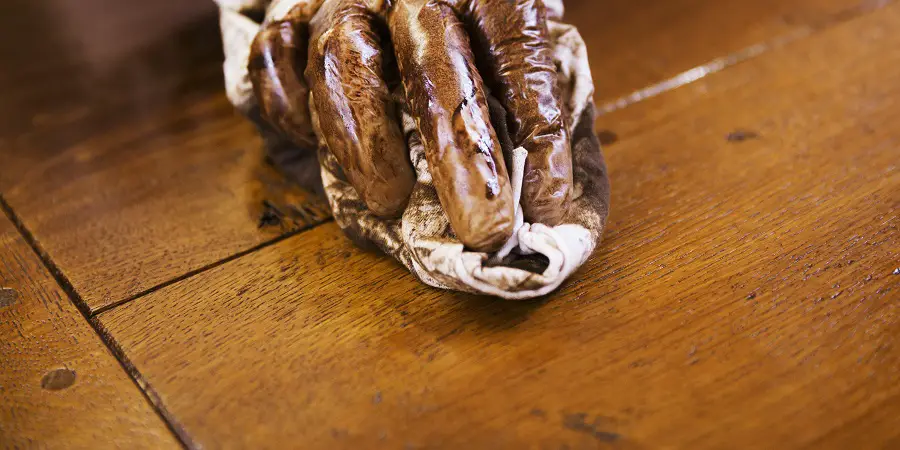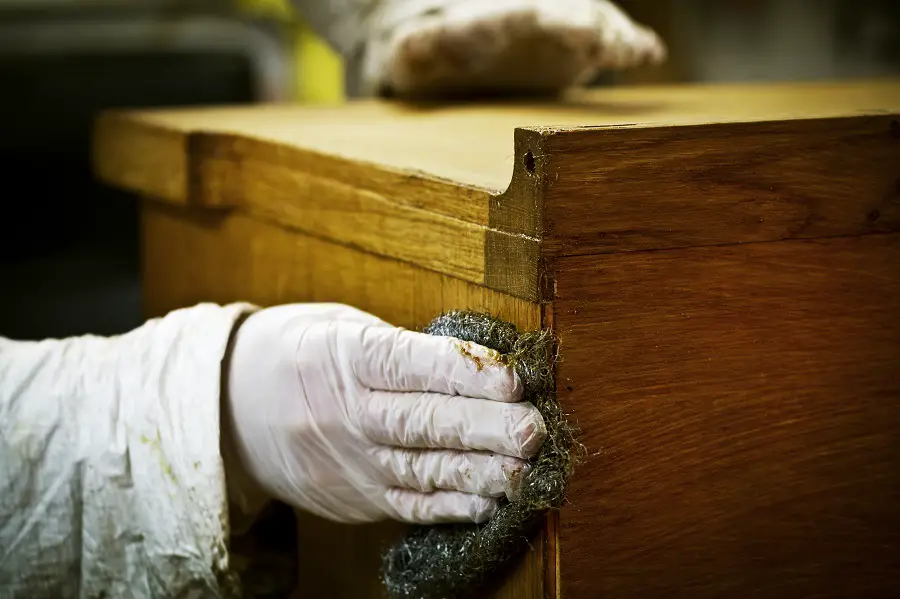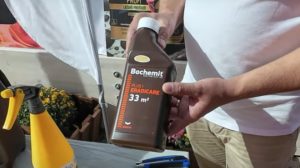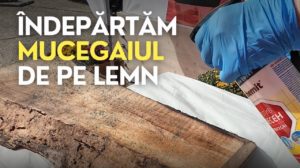Although there are many types of wax on the market, many people like to make their own. I am always finding requests for wax recipes on profile groups or in comments received on magazine channels. Some want to use it for furniture maintenance, others directly on wood to protect and beautify it. There's no standard recipe for these types of wax, but there are some common elements that we'll soon discover.

The basics of a wax recipe
Furniture or wood waxes need to be easy to apply, have a pleasant, long-lasting odor and appearance, and protect the surfaces to which they are applied. That is why the different types of skies, natural or synthetic, should be mixed with materials that will make them flow so that they can be easily applied with a rag or brush. For fluidization use oils and/or solvents. In order to mix very well, the wax is first brought to a liquid phase by heating and then the other components are added, stirring gently until total homogenization. Heating is done carefully in a water bath as the products are flammable.
The ratio between the two components varies depending on how hard or soft you want the wax to be. A harder wax will polish and give a glossy surface, while a softer wax will penetrate better into the wood and protect it. Turpentine is most commonly used as a solvent, because it is natural and has a specifically pleasant odor, or white spirit (less often because of its strong smell).
In addition to the two basic elements, auxiliary materials may be added, which are not mandatory, but which improve the smell, add color or increase the life of the wax. In the case of waxes used for furniture maintenance, a few drops of essential oils. The most commonly used are lavender, citrus or vanilla oils. This will give you a product that will also help keep your home smelling nice. Also in maintenance waxes it is common to add antioxidants that prevent oxidation (rancidity) of oils (some natural oils can oxidize over time). A few drops of egrapefruit seed extract or vitamin E.
Sometimes we also want the wax to add color to the object to which it is applied. Liquid phase coloring with liquid colorants compatible with waxes and oils. If they are concentrated dyes add 1-2 drops and stir to see the coloring strength. Then add the amount needed to reach the desired color. Mix very well until you get a uniform color throughout the mass.
Types of wax and influence on the mixture
The most commonly used waxes are beeswax, carnauba wax and paraffin wax. Beeswax is the most commonly used because it is easier to find, natural and cheaper. It can be bought commercially or directly from the producer. The commercially available is already cleaned and can be found under the trappings, granules or flakes. Beeswax from the manufacturer may contain water and impurities. It is therefore recommended to melt it separately from the other components (melting temperature 62-64°C), after which it is allowed to harden again. Any impurities will collect on the surface and water will accumulate at the bottom of the bowl. The re-hardened wax can be washed, wiped and scraped on the surface to remove the layer of impurities.
Carnauba wax is secreted by the leaves of a Brazilian palm tree - Copernica Corifera - as protection against excess water and the strong sun that can dehydrate them. Carnauba wax is harder than beeswax and has a higher melting temperature (82-86°C). It is available in emulsion, granules or flakes. Because of its high hardness it is widely used for polishing products in the automotive industry. In wax blends it gives the film hardness and very high moisture resistance. Its influence is very high which is why it is used in lower percentages. A very small increase in carnauba wax content leads to significant changes in the final properties of furniture wax.
Paraffin is a mixture of saturated hydrocarbons obtained from the processing of petroleum, very similar to wax. Refined paraffin is white in color, unrefined paraffin is yellow. The composition of paraffin wax varies widely, so the melting temperature is between 55 and 80°C. It is used in many fields, from textiles and cosmetics to food processing and protecting transported fruit against dehydration. It is a common alternative to natural products and is more economical. Many commercial waxes contain paraffin wax. Vaseline used to grease tools or devices is also paraffin-based.
Oils that can be used in recipes
The range of oils that can be used in wax recipes is very wide. Classic wood oils can be used, i.e. linseed oil and the tung, mineral oil or vegetable oils such as olive, coconut, almond, walnut, jojoba.
Linseed oil and the tung are used mainly in mixtures for direct use on wood. They "nourish" and protect the wood, giving it superior resistance to water and mechanical action (especially tung oil).
Mineral oil is mainly used for its safety. The oil does not oxidize and does not contain dangerous substances and can be used to protect wooden kitchen utensils. Mixed with waxes, it can also be used to maintain furniture or protect wood.
Vegetable oils are mainly used to make waxes to protect and maintain furniture. The most commonly used is olive oil. It is advisable to make smaller quantities of wax so that it is not kept for a long time and there is no danger of oxidation. These are waxes in which various essential oils are added for fragrance and, when put in nice-looking jars with a tight seal, can make a great gift.

Examples of recipes
As I said at the beginning, there are many wax recipes. I've chosen a few of them, but enthusiasts can start from this base and make their own mixtures. The satisfaction will be much greater.
1. Put equal amounts of beeswax and paraffin wax and melt them together on a water bath. Take one part of the liquid mixture and mix with 1,5 parts of vegetable oil, also on the water bath, stirring gently until homogenized. Stop heating, allow to cool slightly and add a few drops of essential oil. Pour into a glass jar with a tight-fitting lid or a sturdy plastic container.
2. Put 150 g of crumbled wax and 600 g of olive oil together in a pot that can be placed on a water bath. Keep on the heat until the wax has completely melted, stirring gently continuously. Finally, once the heat has stopped and the mixture has cooled slightly, add the essential oil (10 drops) and the antioxidant (30 drops). Pour into a covered container.
3. Melt the beeswax. Take 1/4 part wax and mix with 3/4 part mineral oil. Mix slowly in a water bath. After complete mixing add essential oil add it and put in the jar.
4. Mix 125 g carnauba wax flakes with 500 g beeswax and 1 liter of turpentine. Stir over a fire in a water bath until completely homogenized. Dye may be added to obtain colored wax. Decreasing the amount of turpentine will result in a thicker wax and increasing the amount of carnauba wax will result in a harder wax.
5. Mix 2 parts liquid wax (beeswax or a mixture of beeswax and carnauba) with 3 parts boiled linseed oil. To obtain a more fluid gel-like mixture, turpentine may be added.
6. Mix 1/3 part beeswax with 1/3 part carnauba wax and 1 part tung oil in a water bath over a fire. This wax is very good for protecting wooden objects subject to mechanical action or abrasion (floors).
7. For a thicker wax, mix 2 parts beeswax with 1 part boiled linseed oil. For a softer wax, mix 2 parts beeswax with 2 parts boiled linseed oil and 1 part white spirit.
Whatever the recipe, the mixture should be allowed to cool in the packaging before use. Complete cooling takes 3-4 hours, but is best used the next day. Apply with a cloth or brush. If the wax is harder, a short-bristled brush is more suitable. It is very good to apply with a pad such as for applying shellac.
I hope you will find the information interesting and use it when you decide to make your own furniture and wood protection wax. If you have any further clarifications or questions, please leave them below in the space provided. I will certainly answer you.




































Hello, can isopropyl alcohol be mixed with natural beeswax